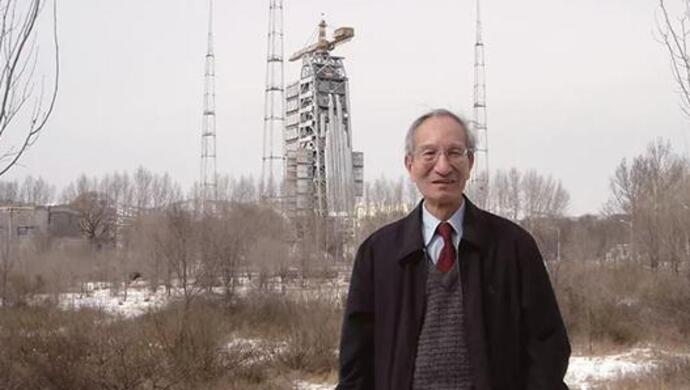
Source: lookout think tank Author: Li Ting
There is such a person:
Seventy years ago, in the battlefield to resist US aggression and aid Korea, he used several cans to resist the electronic interference of the US military, which greatly improved the combat effectiveness of our air force. Wang Chen, the founding lieutenant general, entrusted him with a heavy responsibility. "From now on, you will be in charge of the radar of the whole army";
Sixty years ago, in China’s coastal areas, he actively developed the sharp weapon of the air force, repeatedly shot down the u-2 reconnaissance plane of the US military that invaded China’s airspace for reconnaissance, and built a national defense security barrier;
In recent years, he has been indispensable in China’s manned space flight, space station and lunar exploration projects.
He is Zhang Lvqian.
todayGod, we walked into the story of him and our air force radar.
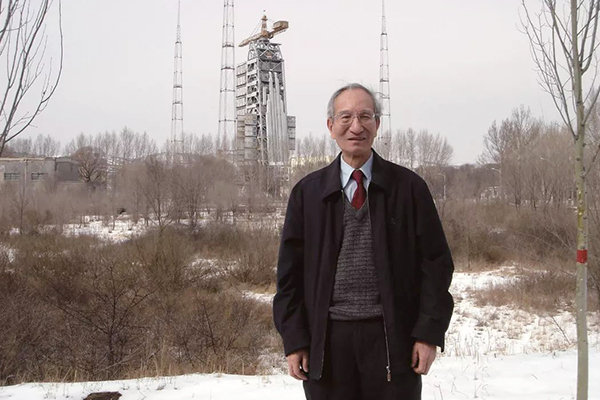
Zhang Lvqian is in Taiyuan Satellite Launch Center.
one
"Never go back until you solve this problem."
In June 1950, after the Korean War broke out, the American b-29 heavy bomber (nicknamed "Super Air Fortress"), a veteran who participated in the Second World War, returned to the rivers and lakes and carried out carpet bombing on various targets in North Korea. For a time, the b-29 heavy bomber was like nobody’s business.
Soon, with the participation of the Soviet Air Force, the MIG-15 fighter, the nemesis of the b-29, came.
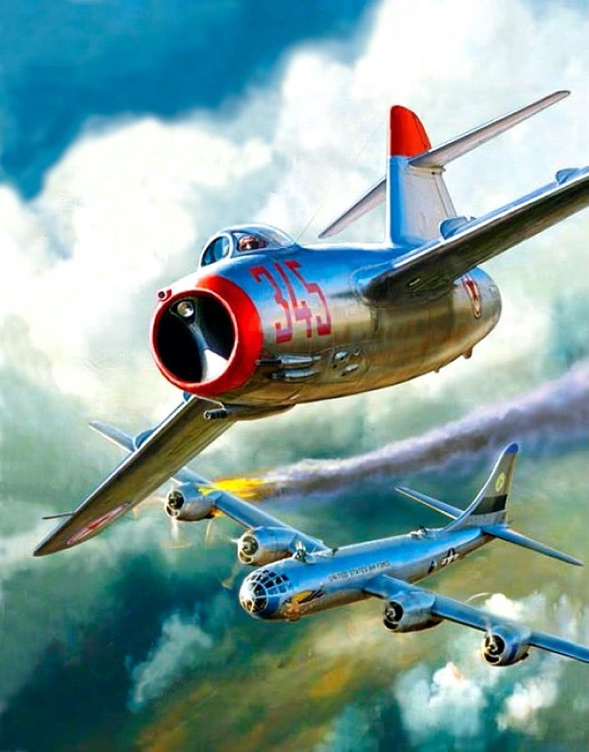
Show the paintings of MIG-15 beating b-29.
On April 12th, 1951, 48 B-29s attempted to bomb the Yalu River Bridge in Anton under the cover of nearly 100 F-80s and F-84s. The Sino-Soviet Air Force dispatched about 80 MIG-15s to intercept, of which 30 MIG-15s broke through the defense line of escort fighters to attack the b-29 fleet. Three B-29s were shot down on the spot, seven were seriously damaged, and the bombing mission was interrupted.
After this "Black Thursday", the US Air Force suspended the bombing of large bombers for nearly three months.
Since then, in the large-scale air battle from October 22 to 27, 1951, five more B-29s of the US military were shot down on the spot, six were seriously damaged, crashed or landed during the return flight, and more than 10 others were injured.On October 28th, the US Air Force Command ordered to stop the daytime strategic bombing of large bomber clusters and change the use of bombers to small-batch tactical support at night.
In air combat at night, radar is the eye of the plane.
The US military converted some B-29s into electronic combat aircraft, which interfered with the radars of the Chinese and Korean armies. According to the declassified data of the United States after the war, the electronic warfare equipment used by the US military at that time was basically the second-hand color used in World War II, and the relevant technicians were also scarce; The latest electronic warfare equipment was not used in the Korean battlefield for confidentiality reasons.
It can be said that compared with the peak at the end of World War II, the US military’s electronic warfare strength has dropped a lot, but it is still at the world’s leading level.

Electronic jamming equipment installed inside the b-29 heavy bomber.
At that time, most of the radars equipped by the Chinese and Korean armed forces were old models used by the Soviet Union in World War II. Under the interference of the U.S. military, nothing can be seen on the radar screen, or snowflake noise appears, which can’t guide the fighter to take off and fight.
This problem was quickly reported to Wang Chen, who was then the head of the communications department of the Central Military Commission. Wang Chen rushed to Dandong radar station on the border between China and North Korea overnight to sit in the town himself.After watching the whole process of radar jamming, he seriously said to a young subordinate, "I will never go back until I solve this problem."
This is a determination and an order.
Wang Chen’s subordinate was only in his twenties at that time. He was a college student who had just graduated and had not been exposed to radar for a long time.
Can he handle the electronic interference of the US military?
2
"From now on, the radar of the whole army will be in your charge."
This young man’s name is Zhang Lvqian.
On March 1, 1926, he was born into a peasant family in huanghua town, Changsha, Hunan. His father was a well-known local doctor, so he was named Lu Qian in the hope that he would "fulfill his modesty".
After graduating from primary school, Zhang Lvqian met with the outbreak of the Anti-Japanese War, and finished his middle school studies in the midst of displacement. In 1946, he was admitted to the Department of Electrical Engineering in Tsinghua University with his high school classmate Zhu Rongji, and lived in the same dormitory (Mingzhai 117). Zhu Rongji later served as the president of Tsinghua University Student Union, and often went out to participate in activities.Zhang Lvqian saw that he didn’t have any decent winter clothes, so he gave him his best one-a leather jacket.
In December 1948, Zhang Lvqian secretly joined the Communist Party of China (CPC). After graduating from college in 1951, he was assigned to the Communications Department of the Central Military Commission. Minister Wang Qian attached great importance to party member, a Tsinghua University graduate, and arranged for him to engage in radar.Radar was a high-tech at that time, and it was a strange major for Zhang Lvqian, but he insisted on the belief: "As long as the work requires, I will do what the party asks me to do, and I will do it well."
Zhang Lvqian studied radar-related knowledge assiduously, carefully read the foreign version of "Fundamentals of Radar" and translated it into Chinese for his peers to learn. He also went to the radar army to learn about the working conditions of radar.
As the first radar technician in the Communication Department of the Military Commission, Zhang Lvqian took over the anti-jamming task given to him by Wang Chen on the battlefield of resisting US aggression and aiding Korea. He stayed at the radar station for more than ten days, observing the interference phenomenon with the radar technician and discussing the countermeasures.

Soviet p-20 radar was used in the Korean War.
Radar jamming can be divided into passive and active categories. At that time, the passive jamming was that the aircraft threw metal chaff. This jamming method was simple in technology, but it was difficult to jam the radar continuously for a long time. Active jamming was the main jamming method used by the US military at that time (and still is). The radar jammer can be regarded as a small radar, which can achieve the effect of blinding radar by emitting signals with the same frequency as the real radar.
In the analysis and research of jamming phenomenon, Zhang Lvqian found that whenever the working frequency of radar is changed, the jamming phenomenon will disappear for a period of time before it appears, and when the radar works at the highest or lowest working frequency, the jamming seems to be weakened.
Now, we know that this happened because the internal working parameters of the early radar jammer used by the US military at that time needed manual adjustment by the operator. Once the radar operating frequency changes, the operator needs to search for the new operating frequency first, and then set the jammer to this frequency. During this time period, the radar is undisturbed and can work normally.
In addition, due to the limited space and power supply on the plane, the performance of radar jammer will also be limited. In addition, the Soviet Union kept the technical performance parameters of radar strictly confidential. The radar jammer used by the US military at that time was originally aimed at German and Japanese radars during World War II and could not completely cover the working frequency range of Soviet radars.
At that time, it was impossible for Zhang Lvqian to understand it in that detail, but he quickly summed up several measures to deal with interference: changing radar frequency quickly, expanding radar frequency band, installing instantaneous automatic gain control circuit, and locating interference sources jointly by multiple stations.Although these measures are simple, they are very effective.
In fact, the early radar jamming and anti-jamming test the hand speed of both operators.
In the absence of radio equipment, Zhang Lvqian creatively cut several empty cans into semicircles to make "capacitors", and connected these "capacitors" with hemp ropes and pull rods to rotate synchronously. By changing their relative positions in combat, the radar frequency was changed quickly.Using "small cans to solve the big anti-interference problem".
This fast frequency hopping anti-jamming method is still an effective anti-jamming means used by various modern radars until now.Zhang Lvqian also summed up the anti-jamming experience at the front line, wrote operating rules and issued them to the whole army, which became the first electronic countermeasures regulation of our army.
In recognition of Zhang Lvqian’s work in the front line of North Korea, the Communication Department of the Military Commission gave him a third-class commendation at the end of the year.
Wang Qian said to him happily, "Young man, from now on, you will be in charge of the radar of the whole army."
In 1953, the first radar jamming and anti-jamming group of our army was formally established, with Zhang Lvqian as the team leader and Wang Chen as the deputy team leader.
three
Repeatedly build air force sharp weapons
In 1954, the air force entered Fujian and put it on the agenda.
At that time, the Kuomintang deployed radar stations on the islands along the coast of Fujian, and it was easy to be found when our army flew directly, thus losing the suddenness of combat operations. If the aircraft is packed and disassembled and transported by land, it will be time-consuming and laborious, and the aircraft will not be able to form combat effectiveness immediately after disassembly.
Zhang Lvqian ushered in a new task, when our air force was stationed in Fujian, it conducted electronic jamming on Taiwan Province’s radar.
After careful consideration, he suggested that jamming is a sharp weapon to win in combat operations, and it should not be used easily at ordinary times. He suggested that Taiwan Province’s radar should be electronically reconnoitred to find the blind spot covered by its radar, and the plane could enter Fujian through the blind spot.
This suggestion was adopted.
In the next half year, he took a small team to various hills and islands in Fujian. Through reconnaissance, orientation and other measurements, he obtained data such as the number, function, frequency and range of Taiwan Province radars, mapped out the radar layout map and blind area map of Taiwan Province, and sent them to the General Staff Warfare Department, which provided important information for our air force in Fujian.
In the autumn of 1957, Zhang Lvqian was transferred to the Second Branch of the Fifth Research Institute of the Ministry of National Defense (now the Second Academy of Aerospace Science and Technology) as the deputy director of the radar research office, and began to imitate the Soviet 1059 short-range surface-to-surface missile (later named "Dongfeng No.1"), specifically responsible for the imitation of the missile yaw corrector.
During this period, he overcame the difficulties caused by the sudden withdrawal of Soviet experts. After more than 200 experiments, he completed the task through self-developed instruments, equipment and substitute materials.
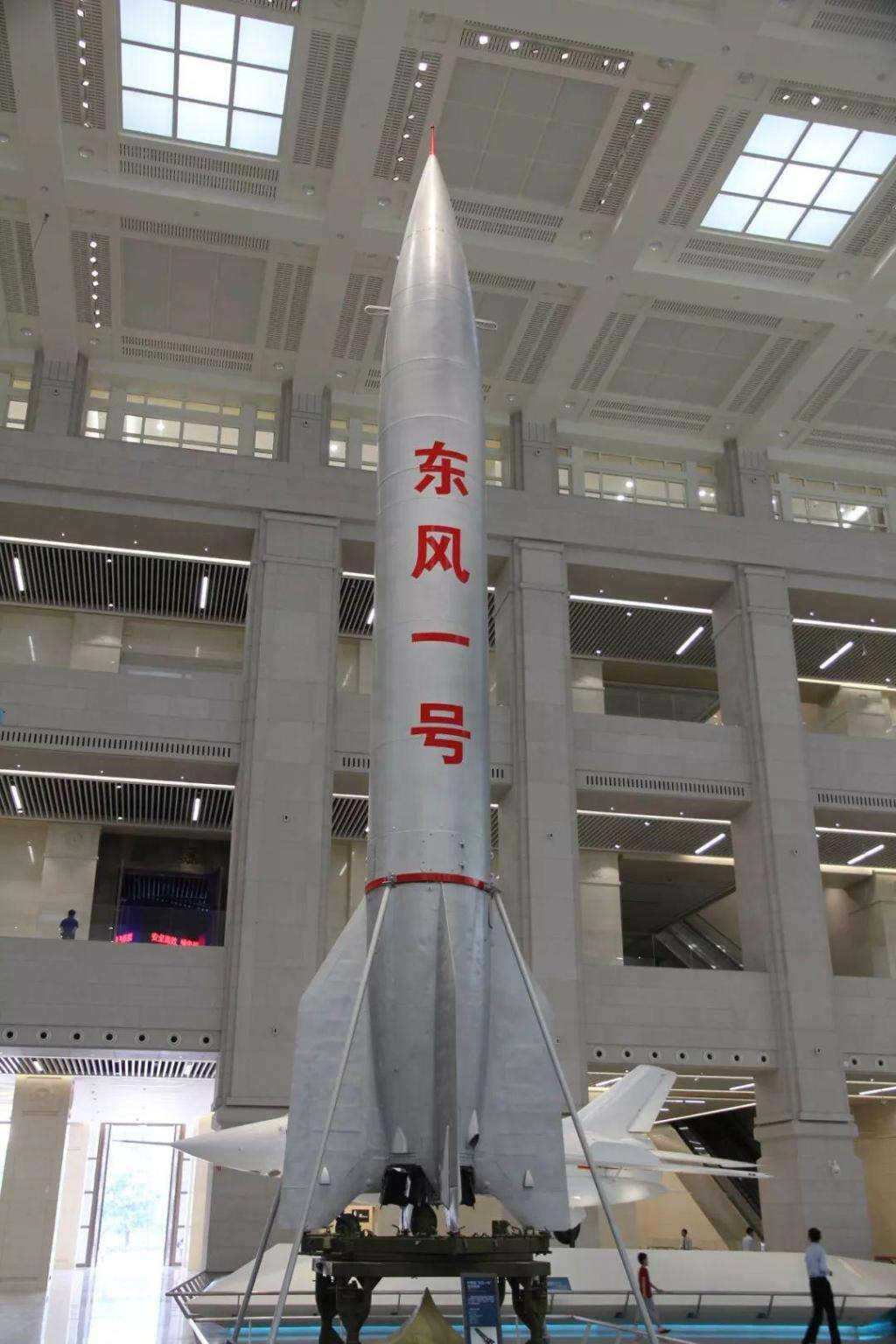
Dongfeng-1 missile exhibited in the museum.
Since 1962, the United States began to use the u-2 reconnaissance plane, piloted by Taiwan Province pilots, to conduct reconnaissance activities on the mainland. At that time, the only thing that could shoot down u-2 was the Sam -2 missile.
Sam -2 missile is the first generation surface-to-air missile of the Soviet Union. After seeing the plane, the radar transmits the position of the missile plane by radio to guide the missile to attack the target.Therefore, the guidance radar is equivalent to the eyes of a missile.
After completing the imitation of the Soviet 1059 short-range surface-to-surface missile, Zhang Lvqian made persistent efforts and devoted himself to the imitation of the Soviet Sam -2 surface-to-air missile, taking charge of the imitation of the transceiver system of the guidance radar station. [Note: The imitation and improved models of Sam -2 missile were later named "Red Flag 1" and "Red Flag 2". 】
In September 1962, in Jiangxi, Sam -2 missile shot down the first u-2.
The Americans responded quickly and quickly installed a radar reconnaissance and alarm system for u-2-once the guided radar signal of Sam -2 missile was detected, it would alert the pilot.
Our side has developed a "close-to-quick method of warfare" after seeing the move instead of the move.(Zhang Lvqian also contributed to this), first using other radars (such as anti-aircraft gun guidance radar) to illuminate and track u-2 will not trigger its radar reconnaissance and alarm system. Once the u-2 enters the range of the Sam -2 missile, the missile launch preparation is completed within 8 seconds (it used to take 7-8 minutes), and the missile can hit the target within 20 seconds. In such a short time, u-2 has no chance to escape.
Relying on this method, we shot down the second and third U-2s in November 1963 and July 1964.
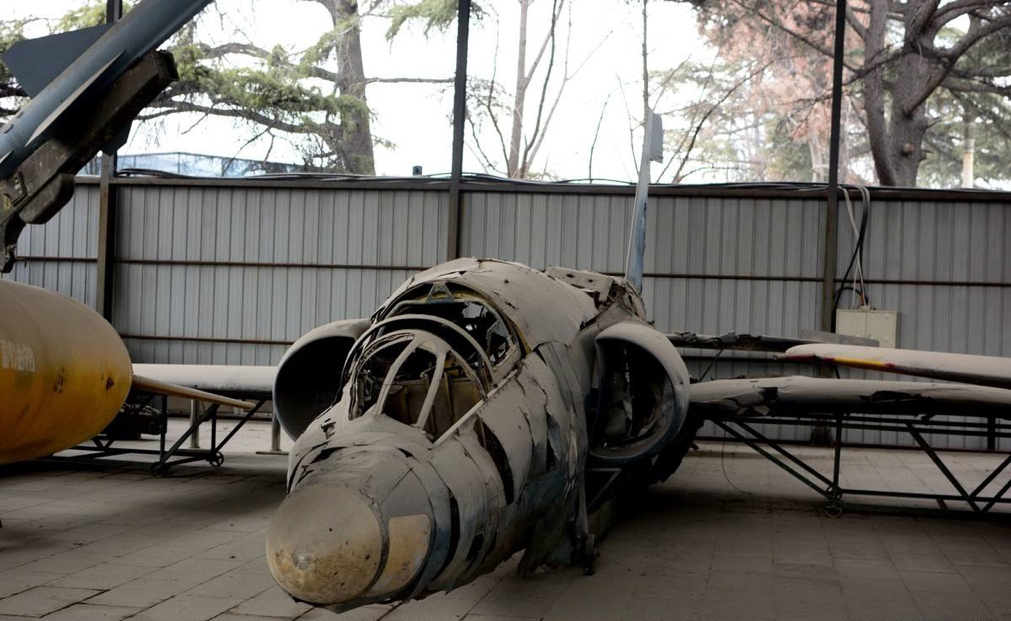
The wreckage of the u-2 plane on display in the museum.
four
"Deal with a man as he deals with you."
On November 26th, 1964, the u-2 plane invaded again.
Our ground-to-air missile unit was already ready. As soon as the u-2 plane entered the ambush circle, it immediately fired three missiles according to the previous tactics.
At this time, something strange happened: from the radar screen, the enemy plane’s signal was originally in the shape of jujube nucleus, and suddenly there was a gap in the shape of jujube nucleus, and the missile passed through the gap, while the u-2 plane first dropped its height and then rose to escape. After the inspection, there is no problem in combat preparation, weapon operation and various support work.
This scene happened several times, and the missile force realized that the Americans had played a new trick and asked for help from their superiors.
Wang Qian found Zhang Lvqian again: "The main job of the research room is to do research, and the army is the actual operating unit of our research results. Therefore, our research must be combined with the army, and we must work together with the army to find a solution to this problem."
After detailed analysis, Zhang Lvqian concluded that the u-2 plane was loaded with a new electronic jamming system. The missile guidance radar adopts the radar system of scanning while tracking, and uses the maximum echo method to locate. The new electronic jamming system can receive the transmitting signal of the missile guidance radar, add the biased jamming signal modulation, and then transmit it back with the same frequency of the radar to jam and deceive the missile guidance radar. In layman’s terms, it’s like a cover-up for magic. Seeing is not necessarily believing.
Later, in view of this problem, the higher authorities specially held a countermeasure research meeting. At the meeting, Zhang Lvqian elaborated on the principle of this interference and his own anti-interference countermeasures.Put forward onlyIf the transmitting signal of missile guidance radar is changed to continuous irradiation signal, this electronic jamming system will fail.
This move was unanimously affirmed by everyone. Wang Qian said, "A good way is to deal with a man as he deals with you."

Hongqi 2 surface-to-air missile guidance radar station.
Zhang Lvqian went to the relevant factories and, together with the factory technicians, modified the launching and receiving system of missile guidance radar, and quickly developed an anti-jamming device. This improvement measure soon received results. On January 10th, 1965, the fourth u-2 plane was shot down in Inner Mongolia.
Technicians found the electronic jamming system that they had guessed from the wreckage of the u-2 plane.
Next, Zhang Lvqian applied the anti-jamming measures fed back from the front line to the design of Hongqi-2 surface-to-air missile guidance radar station, which greatly improved the anti-jamming performance.
In July 1967, the design of Hongqi No.2 was finalized. On September 8, Hongqi-2 missile shot down the fifth u-2 plane in Jiaxing, Zhejiang. The details of this battle have not been fully disclosed. What is known at present is that the Hongqi-2 missile guidance radar has withstood the test of electronic interference, and the domestic electronic warfare equipment has completely defeated American goods.
Later,Zhang Lvqian presided over the overall anti-missile system radar.Design and break through many key technologies of phased array radar, and develop missile precision tracking radar and satellite ultra-long-range guidance radar.He worked as the chief designer to develop a unified microwave measurement and control system, and conquered the technologies of multi-subcarrier, multi-modulation, precise angle measurement, speed measurement and distance measurement, and remote control and telemetry, and completed the launch and location of the first geosynchronous communication satellite in China.
He also participated in the demonstration and top-level planning of China manned space flight, space station and lunar exploration project., put forward the proposal of adopting land station construction, ocean shipping, node monitoring, relay satellite and internationally compatible measurement and control network, and participate in the technical research of measurement and control equipment; Participate in the overall design of the lunar exploration project, study the information transmission between the moon and the earth, conduct risk assessment on the technology of lunar landing and lunar return, and do a lot of work for the lunar exploration project; Participate in the scheme design and review of the national defense special project in China, and carry out the research on anti-black barrier of information transmission.
In 1995, Zhang Lvqian was elected as an academician of China Academy of Engineering.
In 2010, 84-year-old Zhang Lvqian was hired as the chief expert of the special group on measurement and control of rendezvous and docking of Shenzhou-8 spacecraft and Tiangong-1 target aircraft.
On October 23rd, 2020, Zhang Lvqian, as a representative of the Volunteers, was received by the General Secretary of the Supreme Leader at the conference commemorating the 70th anniversary of Chinese people’s Volunteer Army’s war to resist US aggression and aid Korea.
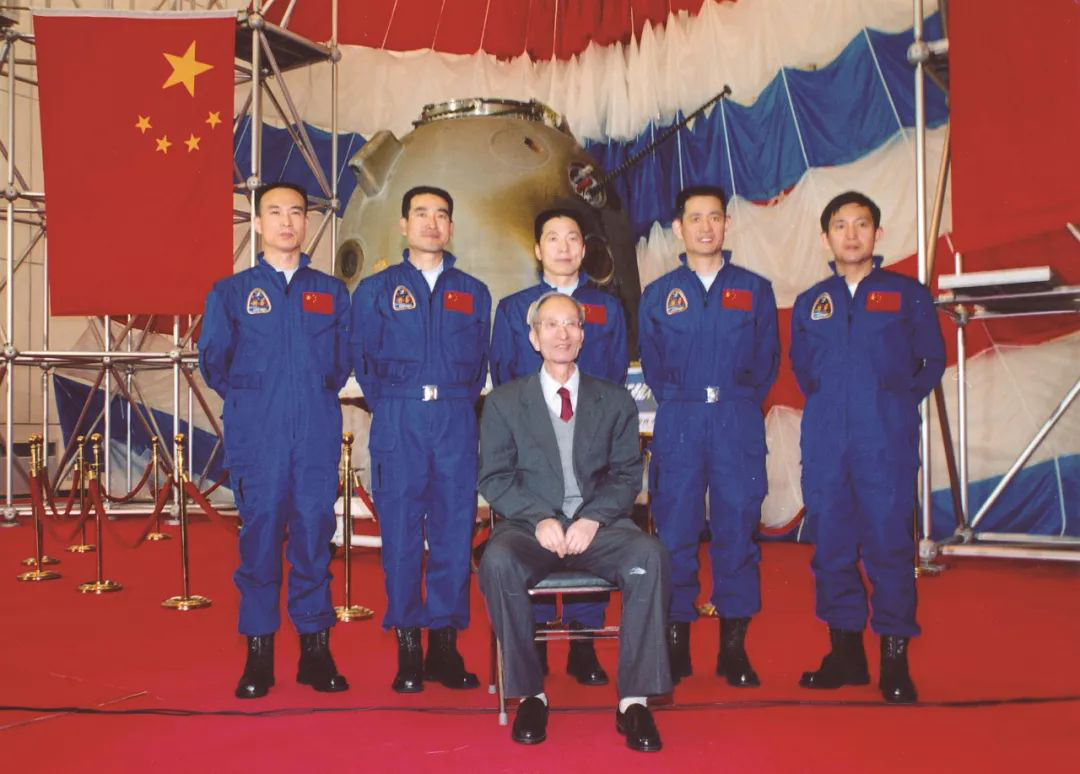
Zhang Lvqian and the first astronauts took a group photo in front of the recovery module.
Today, one of the pioneers of China’s radar technology, electronic countermeasures and aerospace industry is 94 years old, and he is still busy. He pays attention to international academic trends and shares exchanges with his peers; Browse various news app; every day; After learning to use WeChat at the age of 88, I will make friends and interact with my friends …
This just confirms what Zhang Lvqian said,"I have been dealing with the blue sky all my life, and I have only done two things in my life-learning and practice, practicing after learning, and learning in practice."
References:
1. Being humble and aiming at the blue sky —— Zhang Lvqian, academician of China Academy of Engineering and expert in radar and space electronics technology | Common sense, Economic Daily, November 26, 2019.
2. Challenge the blue sky: edited by Zhang Lvqian Zhong Zhi, an expert in radar and space electronics technology, China Aerospace Press, October 2011.
(The pictures in this article are provided by the author. This article is a cooperation article with Wang Zhengxing. Wang Zhengxing, a former officer in a field unit of the People’s Liberation Army, whose WeChat official account is called "This is War", WeChat ID: xiaoxiaongchumo 123, welcome to pay attention. )
Editor-in-Chief: Gu Wanquan
Author: Li Ting, a lookout think tank
Text Editor: Fang Ying
Title map source: Looking at the think tank
Photo Editor: Zhu Ying
关于作者